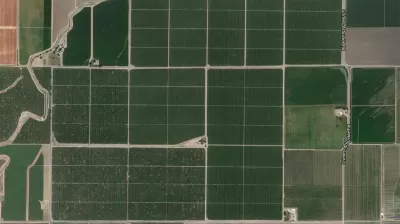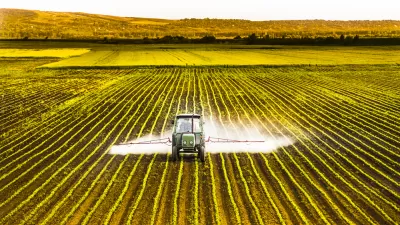Over the span of history, agricultural uses have released nearly as much carbon into the atmosphere as actual deforestation. New problem areas are still appearing in places like Brazil.

By depleting carbon stored in soil, agriculture has had a greater impact on the climate than previously supposed. According to a recent study, "land use changes associated with planting crops and grazing livestock have caused a loss of 133 billion tons of carbon from soil worldwide over the last 12,000 years, amounting to about 13 years of global emissions at their current levels."
Previous estimates, which were lower, relied on simple multiplication based on single-plot samples. This time, Chelsea Harvey writes, "the researchers were able to employ a large data set containing specific information on different soils from all around the world."
In places with "mature" agricultural economies, carbon losses from soil have been mitigated to a degree. "On a global scale, soil carbon losses have been speeding up since the industrial revolution, particularly in the 19th century. In the past 100 years, losses have tapered slightly, but still remain high, with the most significant emissions coming from new-world countries, such as Brazil, where large-scale agriculture is still expanding."
Harvey suggests that the study's findings could help pinpoint where sustainable land management techniques could do the most good, restoring carbon lost from soil to the ground.
FULL STORY: This is why when you talk about climate change, you can’t ignore agriculture

Alabama: Trump Terminates Settlements for Black Communities Harmed By Raw Sewage
Trump deemed the landmark civil rights agreement “illegal DEI and environmental justice policy.”

Study: Maui’s Plan to Convert Vacation Rentals to Long-Term Housing Could Cause Nearly $1 Billion Economic Loss
The plan would reduce visitor accommodation by 25% resulting in 1,900 jobs lost.

Why Should We Subsidize Public Transportation?
Many public transit agencies face financial stress due to rising costs, declining fare revenue, and declining subsidies. Transit advocates must provide a strong business case for increasing public transit funding.

Paris Bike Boom Leads to Steep Drop in Air Pollution
The French city’s air quality has improved dramatically in the past 20 years, coinciding with a growth in cycling.

Why Housing Costs More to Build in California Than in Texas
Hard costs like labor and materials combined with ‘soft’ costs such as permitting make building in the San Francisco Bay Area almost three times as costly as in Texas cities.

San Diego County Sees a Rise in Urban Coyotes
San Diego County experiences a rise in urban coyotes, as sightings become prevalent throughout its urban neighbourhoods and surrounding areas.
Urban Design for Planners 1: Software Tools
This six-course series explores essential urban design concepts using open source software and equips planners with the tools they need to participate fully in the urban design process.
Planning for Universal Design
Learn the tools for implementing Universal Design in planning regulations.
Smith Gee Studio
Alamo Area Metropolitan Planning Organization
City of Santa Clarita
Institute for Housing and Urban Development Studies (IHS)
City of Grandview
Harvard GSD Executive Education
Toledo-Lucas County Plan Commissions
Salt Lake City
NYU Wagner Graduate School of Public Service




























